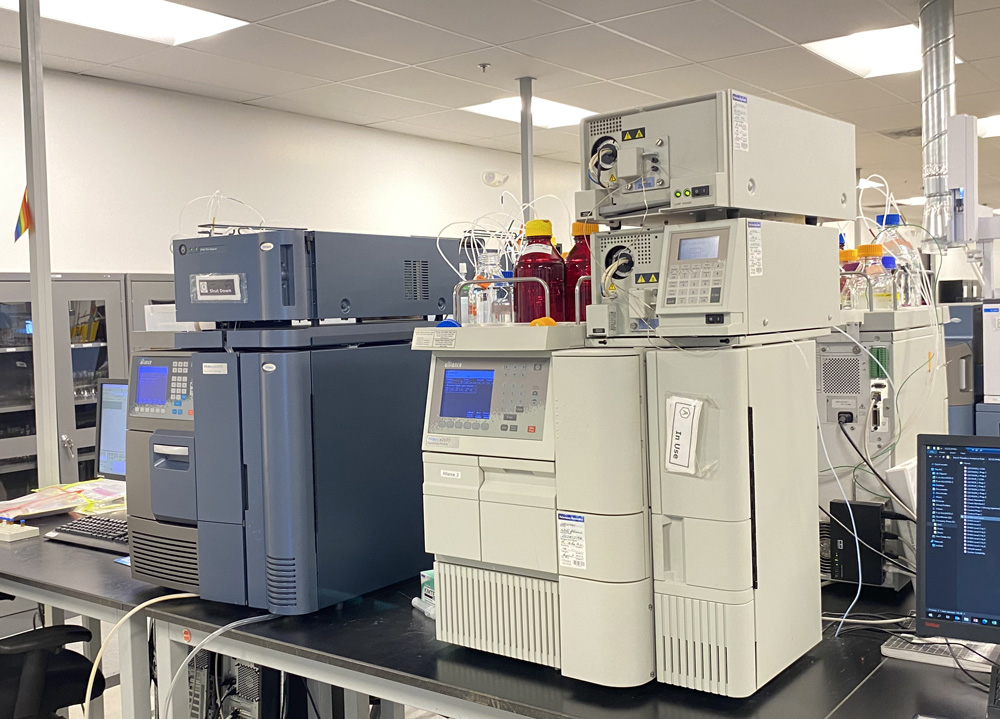CONSTITUENT AND ACTIVES ANALYSIS

Expertise and capabilities
Alkemist Labs, founded in 1979, is an established leader in identity testing, phytochemical potency analysis, and contaminant screening encompassing all herbs and fungi in commerce. We specialize in plant and fungi authentication, botanical and fungi ingredient identification, quantitative analytical services, and contaminant screening for the Food & Beverage, Nutraceutical and Cosmeceutical industries. Located in a state-of-the-art facility in Garden Grove, California, Alkemist Labs offers clients a wide range of specialty research services to evaluate the identity, purity, and quality of botanical raw materials, dietary ingredients, and finished products.
Alkemist Labs has ISO 17025 accreditation by the American Association for Laboratory Accreditation (A2LA), and has also met the AOAC Analytical Laboratory Accreditation Criteria Committee (ALACC) guidelines. Natural products are complex and require more than a combination of different analytical techniques, they also require the expertise to know when and how to apply those analytical techniques accurately. Our ISO/IEC 17025 flexible scope accreditation means outside specialists have confirmed we have that expertise. As we have expanded our services, we validate the added test methods and done the work to ensure they are included in our ISO 17025 scope.
Quantitative testing of crude materials, botanical extracts, and finished products is a key component of cGMP compliance in the Dietary Supplements industry. The proper analysis of natural products requires not only specific analytical instrumentation, but also the expertise to know when and how to appropriately apply the wide variety of available techniques.
We have hundreds of validated analytical methods, ranging from the biggest sellers to some rarities, and we add more regularly. You can see the full list at the button below. If there is something you need, check with us because, while we do keep the list updated, we are imperfect beings who sometimes procrastinate.
SUBSTANTIATING
LABEL CLAIMS

METHODS
Alkemist is continually adding to our potency testing list. We have a wide variety of compendial methods, in house methods, and supplier specific methods that we use. We also help suppliers develop methods for their unique products that they can then share with their customers. Full method transparency, fit for purpose
OUR TOOLS AND METHODS
We work with our clients to ensure test methods are appropriate for their intended use by identifying and using an appropriate scientifically valid method for each established specification.
HPLC/UPLC
High Performance Liquid Chromatography (HPLC) and Ultra Performance Liquid Chromatography (UPLC) are used to separate, identify, and quantitate compounds. They are considered the most powerful tools in analytical chemistry. HPLC/UPLC can be used to assess the purity of samples from a variety of matrices that are able to be dissolved in a liquid/solvent. In many situations, it is able to quantify compounds and adulterants at very low concentrations. HPLC/UPLC is applicable to the accurate quantitation of several types of chemical constituents of crude raw botanicals from powdered to whole form, extract (powdered or liquid) and finished products/blends as well as all vitamins and amino acids. This is a preferred technique worldwide.
GC
Gas chromatography is a term used to describe the group of analytical separation techniques used to analyze volatile substances in the gas phase. In gas chromatography, the components of a sample are dissolved in a solvent and vaporized in order to separate the analytes by distributing the sample between two phases: a stationary phase and a mobile phase. The mobile phase is a chemically inert gas that serves to carry the molecules of the analyte through the heated column and then through the one of the various detectors used, where the separated compounds are identified by comparing with known compounds. This technique is the preferred method for the quantitation of the various components of fish oils, oils in general or many of the essential/volatile oils of botanicals as well as a wide variety of combustible compounds found in many different matrices.
UV/VIS
Ultraviolet-visible spectroscopy or ultraviolet-visible spectrophotometry (UV-Vis or UV/Vis) refers to absorption spectroscopy in the ultraviolet–visible spectral region. This means it uses light in the visible and adjacent (near-UV and near-infrared (NIR)) ranges. UV/Vis spectroscopy is routinely used in the quantitative determination of solutions of highly conjugated organic compounds, and biological macromolecules. UV/Vis spectroscopy is frequently used to quantitate organic compounds found in many natural products and dietary supplements. UV/VIS has the limitation of not being as specific or accurate as HPLC or GC but could be a quick and easy way of quantitating compounds or groups of compounds for ‘process control’ or when one needs a reproducible way of measuring the quality of any material such as an extract or botanical without the need for the specificity of more accurate techniques.
WET CHEMISTRY
Wet Chemistry is analysis performed in the liquid phase, generally. Wet chemistry contains many different types of methods such as Titration, Gravimetric analysis, Moisture, pH, Specific Gravity, Loss on Drying, Ash, Environmental, and some Elemental analyses of samples. Generally, Wet Chemistry is sometimes used to analyze single components in samples to which the method is targeted but due to the non-specific nature of the wet chemistry methods it is frequently only able to measure larger groups/classes of compounds versus single markers, hence is not as accurate as HPLC or GC.THE ALKEMIST LABS DIFFERENCE
Potency testing of raw materials, botanical extracts, and finished products is a key component of cGMP compliance in the Dietary Supplements industry. The proper analysis of natural products requires not only specific analytical instrumentation, but also the expertise to know when and how to appropriately apply the wide variety of available techniques.
Compendial methods we use include those developed by:
- United States Pharmacopeia (USP)
- Alkemist Analytical Test Method (ATM)*
- European Pharmacopoeia (EP)
- AOAC International
* These methods are typically adapted from applicable peer reviewed research publications.
Want the latest on botanical ingredient testing info and lab updates?
SALES@ALKEMIST.COM | P 714 754 4372
12661 HOOVER ST. GARDEN GROVE, CA 92841
© 2025 – Alkemist | All rights reserved

